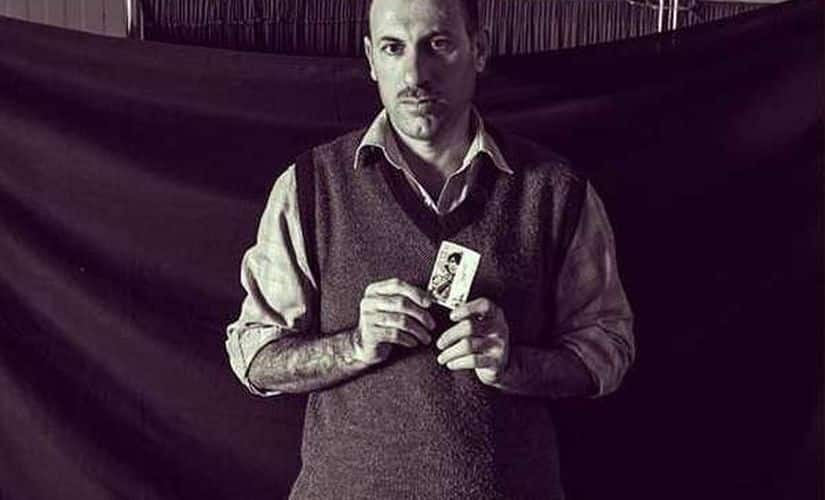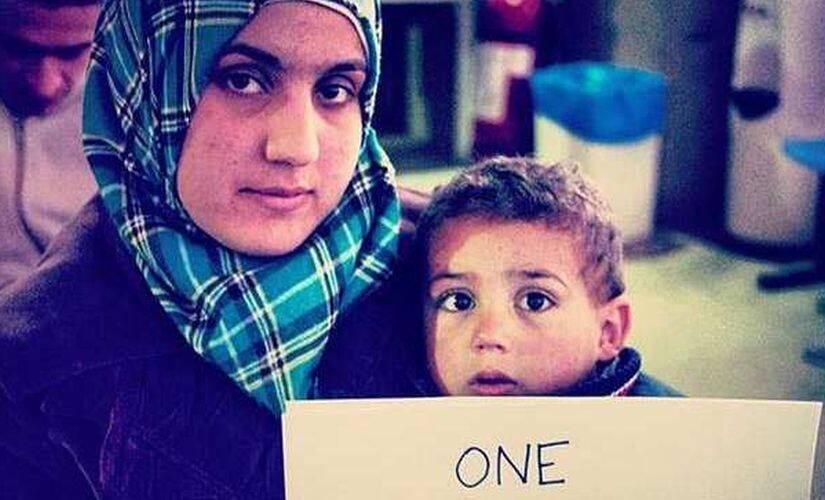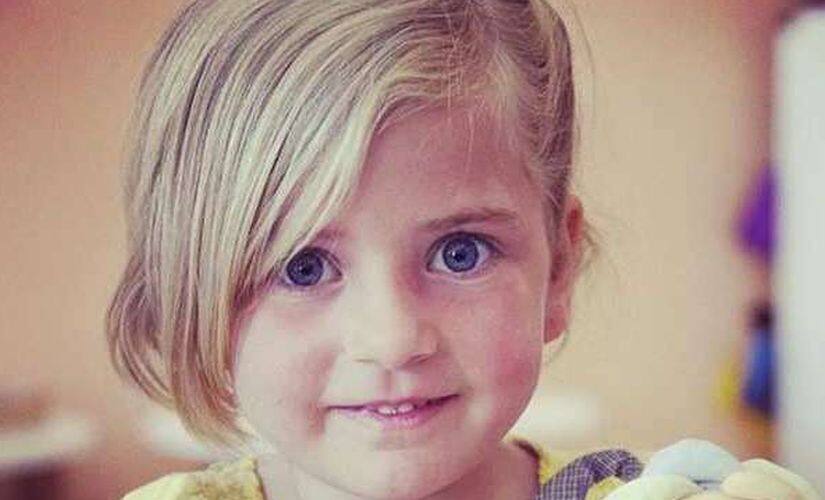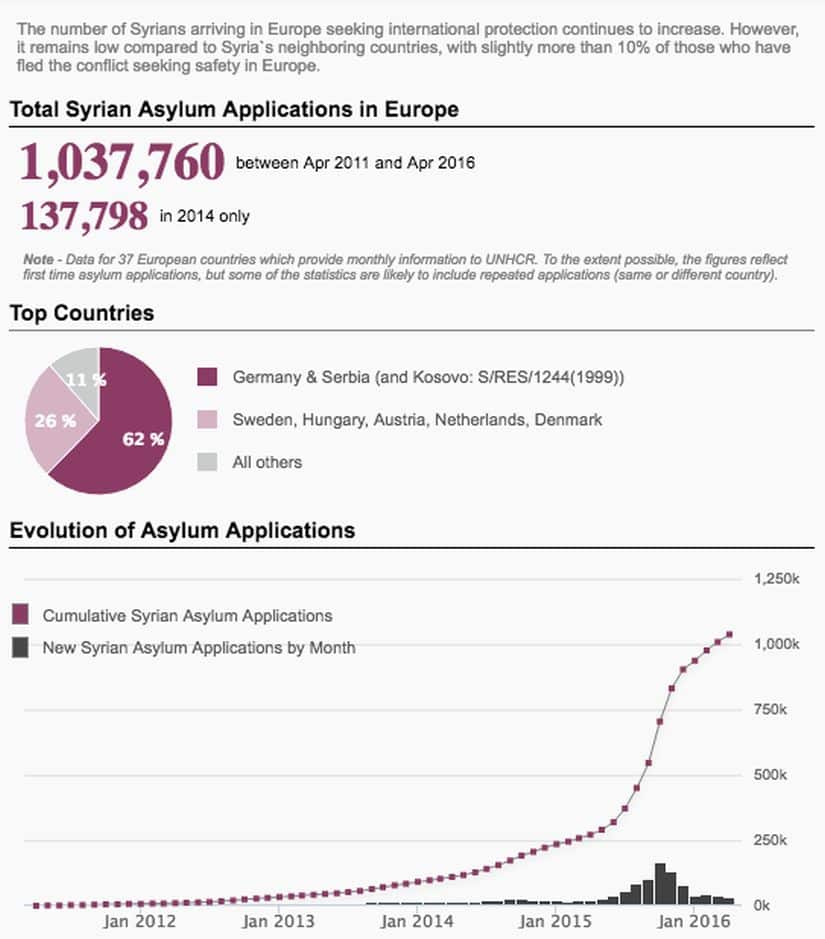Last year, a photo of a little boy washed ashore on a Turkish beach jolted various classes of people into consciousness about the Syrian refugee crisis that has been rising steadily since 2011. Of course, there has been a more than a fair share of reportage on Syria’s refugees, but it was only when the image of Aylan Kurdi’s tiny dead body lying on a beach surfaced that the world took notice. It finally became morally criminal to ignore the screams, tears and pleas of thousands of Syrians who had been fleeing to Europe in search of a better life—away from war and misery. According to an AFP report, the number of refugees and others fleeing their homes worldwide has hit a new record, spiking to 65.3 million people by the end of 2015. Europe’s migrant crisis, its worst since World War II, is just one part of a growing tide of human misery involving Palestinians, Syrians and Afghans. Globally, close to one percent of humanity has been forced to flee. “This is the first time that the threshold of 60 million has been crossed,” the UN refugee agency said. The figures, released on World Refugee Day, underscore twin pressures fuelling an unprecedented global displacement crisis. As conflict and persecution force growing numbers of people to flee, anti-migrant political sentiment has strained the will to resettle refugees, said UNHCR chief Filippo Grandi. “The willingness of nations to work together not just for refugees but for the collective human interest is what’s being tested today,” he said. From danger to safety: Voices crying for help “Life isn’t safe. We cannot live here (Syria) anymore,” says a young boy, who looks barely ten years old in a Human Rights (Watch
video
on the refugee crisis). “The Taliban warned us to leave or our lives would be in danger…they killed seven of my friends,” said another woman. She was asked to leave because she was educating people about violence against women in Afghanistan provinces. In 2015, over 4000 people, including young children lost their lives trying to get to European Union. [caption id=“attachment_2845128” align=“alignnone” width=“825”]
 Image Courtesy: UNHCR[/caption]
Image Courtesy: UNHCR[/caption]
“Twenty days after my wife gave birth, we left the country. It took us two hours to reach the border. We stayed in a village close to the Syrian/Iraqi border for two nights before finding a smuggler. We paid 1100 USD to cross the border. I left the country for the sake of my family. I don’t want my children grow up as orphans.” - Waleed, Syrian Refugee (Name changed)
[caption id=“attachment_2845142” align=“alignnone” width=“825”]
 Image Courtesy: UNHCR[/caption]
Image Courtesy: UNHCR[/caption]
“I felt relief; I realised that we had escaped death.” - Bushra, a Syrian refugee on how she felt when she saw a sign that said she was in Lebanon.
[caption id=“attachment_2845156” align=“alignnone” width=“825”]
 Image Courtesy: UNHCR[/caption]
Image Courtesy: UNHCR[/caption]
“I’m very happy today…with my new toys.” - Four year old Rima who lives in a Turkish refugee camp
Jan Egeland, head of the Norwegian Refugee Council and a senior UN diplomat, told AFP that refugees “are the victims of a general paralysis” among nations who are not meeting their responsibilities to the world’s neediest. The pattern of migration has evolved — according to the
Global Bilateral Migration Database
, in 2000, most migrants, especially Syrian were men. However, now it is mostly women and children who are fleeing the country. “Displacement as a result of conflict appears to have changed this typical migration pattern since many of the countries which previously hosted the most Syrian migrants — among them Saudi Arabia, Kuwait, the United States, and Germany—are not the top asylum destinations for refugees,” said the
Open Data
report.
According to a UNHCR
, a significant number of refugees are children. Europe is not the only continent facing crisis According to a Foreign Policy
report, Europe might look like it is battling with a massive refugee crisis, it isn’t entirely the case. Countries such as Jordan, a moderate and stable Arab country has been swamped with refugees — it is caught between the Syrian civil war and the conflict in Iraq. According to Bustle, in Zataari camp — one of the world’s largest Syrian refugee camps, there are 8,00,000 people being camped, the number is only growing — “What was meant to be temporary, a safe haven in which to wait out the conflict raging back home, becomes an increasingly more permanent home for many with each passing year,” states the report. Lebanon is equally plagued with a significant influx of refugees. Turkey, too, though it is a larger country and significantly richer than Lebanon and Jordan, refugees camped in Turkey are facing political and economic turbulence from the Syrian war. “Unless wars cease, the number of people fleeing them will likely reach mind-boggling proportions in the coming decades, with a potentially devastating effect on development. This would be especially tragic, considering that many African states currently enjoy the preconditions for solid economic expansion,” says the report. Rising conflict, shrinking solutions A worrying mixture of worrying factors have led to rising displacement and narrowing space for refugee resettlement. “Situations that cause large refugee outflows are lasting longer,” the agency said, including more than 30 years of unrest in both Somalia and Afghanistan. New and intense conflicts as well as dormant crises that have been “reignited” are further fueling the crisis, UNHCR said, pointing to South Sudan, Yemen, Burundi and the Central African Republic, aside from Syria. [caption id=“attachment_2845116” align=“alignnone” width=“825”]
 Source: UNHCR[/caption] Beyond the refugee hotspots in the Middle East and Africa, UNHCR said there were also worrying signs in Central America, where growing numbers of people fleeing gang violence led to a 17 percent rise in those leaving their homes through 2015. Faced with a growing need to resettle those facing persecution, the answers are not always obvious. “The rate at which solutions are being found for refugees and internally displaced people has been on a falling trend since the end of the Cold War,” the UN agency said. Turkey — which struck a controversial deal with the European Union in March to stem Europe’s migrant crisis — hosted the highest number of refugees through 2015 at 2.5 million, mostly Syrians. Germany received the highest number of asylum requests (441,900) over the 12-month span, demonstrating the country’s “readiness to receive people who were fleeing to Europe via the Mediterranean.” Where’s the future? By the time the crisis ends, the Syrian economic situation will become abysmal — more than it is right now. According to
Migration Policy Centre
, it will be an uphill task to reconstruct the social fabric of the nation which has in the last five years, been “methodically ripped” — “International relations do not work according to the logic of charity and moral principles. However, the help of rich countries (not to mention the international “community”, which is a harebrained concept) in reconstructing civil society will be inevitable. These countries should invest in the reconstruction of a devastated Syria, not least to make amends for their present indifference,” says the report. UN High Commissioner for Refugees Filippo Grandi said European leaders needed to do more to coordinate migration policies and to combat negative stereotypes about refugees. “Refugees… don’t bring danger to us, they flee from dangerous places,” said Grandi to AFP, who took office in January. National leaders need to better explain that immigration “in fact contributes to the development of societies,” he said. “Those who do the opposite, who stir up public opinion against refugees and migrants, have a responsibility in creating a climate of xenophobia that is very worrying in today’s Europe,” he said. “It provides a negative example to countries further away.” At least eight Syrian refugees, including children were fired upon indiscriminately for attempting to cross the borders on Sunday. According to the Syrian Observatory for Human Rights, the group of eight had been displaced by fighting around the northern Syrian town of Manbij, held by the Islamic State group and under attack by US-backed forces. The monitor group has reported numerous such incidents over the years. And in May, Human Rights Watch accused Turkish border guards of shooting and beating Syrian asylum seekers. Life for refugees is hard, it is up to us to think of them as human beings — as mothers, father, sisters, brothers, as friends and simply, as fellow human beings. The plight of refugees will not change unless there is a change in the discourse. With the far right grip increasing in Europe and increasing xenophobia everywhere, there needs to be a significant change in how we talk about refugees and asylum seekers — to see them as humans and not those seeking to “take away jobs.” with inputs from AFP
Source: UNHCR[/caption] Beyond the refugee hotspots in the Middle East and Africa, UNHCR said there were also worrying signs in Central America, where growing numbers of people fleeing gang violence led to a 17 percent rise in those leaving their homes through 2015. Faced with a growing need to resettle those facing persecution, the answers are not always obvious. “The rate at which solutions are being found for refugees and internally displaced people has been on a falling trend since the end of the Cold War,” the UN agency said. Turkey — which struck a controversial deal with the European Union in March to stem Europe’s migrant crisis — hosted the highest number of refugees through 2015 at 2.5 million, mostly Syrians. Germany received the highest number of asylum requests (441,900) over the 12-month span, demonstrating the country’s “readiness to receive people who were fleeing to Europe via the Mediterranean.” Where’s the future? By the time the crisis ends, the Syrian economic situation will become abysmal — more than it is right now. According to
Migration Policy Centre
, it will be an uphill task to reconstruct the social fabric of the nation which has in the last five years, been “methodically ripped” — “International relations do not work according to the logic of charity and moral principles. However, the help of rich countries (not to mention the international “community”, which is a harebrained concept) in reconstructing civil society will be inevitable. These countries should invest in the reconstruction of a devastated Syria, not least to make amends for their present indifference,” says the report. UN High Commissioner for Refugees Filippo Grandi said European leaders needed to do more to coordinate migration policies and to combat negative stereotypes about refugees. “Refugees… don’t bring danger to us, they flee from dangerous places,” said Grandi to AFP, who took office in January. National leaders need to better explain that immigration “in fact contributes to the development of societies,” he said. “Those who do the opposite, who stir up public opinion against refugees and migrants, have a responsibility in creating a climate of xenophobia that is very worrying in today’s Europe,” he said. “It provides a negative example to countries further away.” At least eight Syrian refugees, including children were fired upon indiscriminately for attempting to cross the borders on Sunday. According to the Syrian Observatory for Human Rights, the group of eight had been displaced by fighting around the northern Syrian town of Manbij, held by the Islamic State group and under attack by US-backed forces. The monitor group has reported numerous such incidents over the years. And in May, Human Rights Watch accused Turkish border guards of shooting and beating Syrian asylum seekers. Life for refugees is hard, it is up to us to think of them as human beings — as mothers, father, sisters, brothers, as friends and simply, as fellow human beings. The plight of refugees will not change unless there is a change in the discourse. With the far right grip increasing in Europe and increasing xenophobia everywhere, there needs to be a significant change in how we talk about refugees and asylum seekers — to see them as humans and not those seeking to “take away jobs.” with inputs from AFP
)